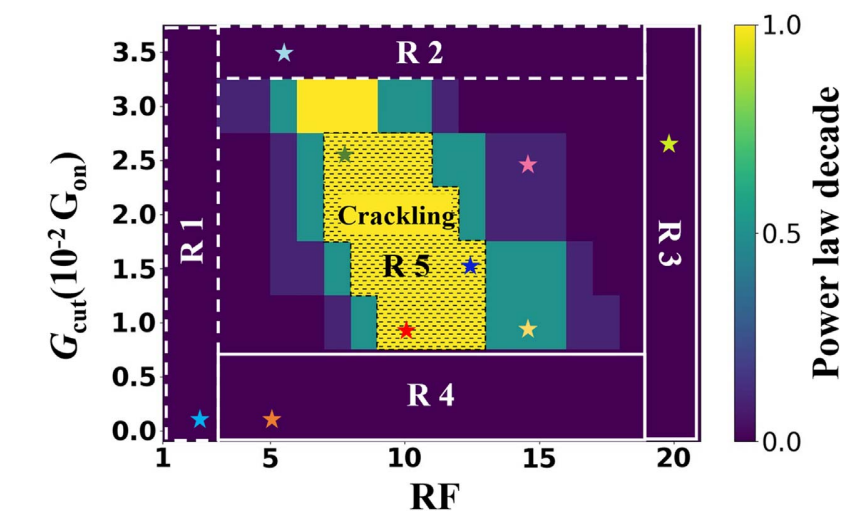Self-assembled networks exhibit correlated electrical noise similar to that found in biological neural networks. Hence, they can serve as promising platforms to test whether such correlated noise brings any advantage in performing low power learning tasks. These networks are characterized by spatiotemporal avalanches and their crackling behavior, and developing robust physical modeling of them is a crucial step in understanding their computing abilities. Here, we use a network theory-based approach to provide a physical model for percolative tunnelling networks, found in a two terminal Ag-hBN memristive system, consisting of nodes (atomic clusters) of Ag intercalated in the hBN van der Waals layers. By modeling a single edge plasticity through constitutive electrochemical filament formation and annihilation through Joule heating, we identify independent parameters that determine the network connectivity. We construct a parameter space map through the network connectivity parameters and show that a small region of the parameter space contains signals which are long-range temporally correlated, but only a subset of them display self-organized criticality.

Self-assembled networks exhibit correlated electrical noise similar to that found in biological neural networks. Hence, they can serve as promising platforms to test whether such correlated noise brings any advantage in performing low power learning tasks. These networks are characterized by spatiotemporal avalanches and their crackling behavior, and developing robust physical modeling of them is a crucial step in understanding their computing abilities. Here, we use a network theory-based approach to provide a physical model for percolative tunnelling networks, found in a two terminal Ag-hBN memristive system, consisting of nodes (atomic clusters) of Ag intercalated in the hBN van der Waals layers. By modeling a single edge plasticity through constitutive electrochemical filament formation and annihilation through Joule heating, we identify independent parameters that determine the network connectivity. We construct a parameter space map through the network connectivity parameters and show that a small region of the parameter space contains signals which are long-range temporally correlated, but only a subset of them display self-organized criticality.
